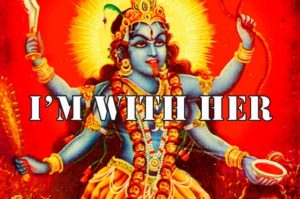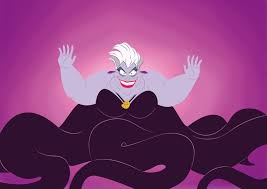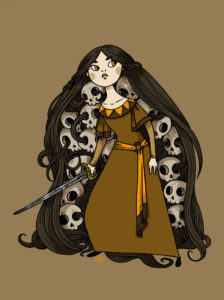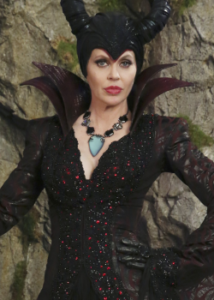Happy 2017, readers! This year on the Block, you can look forward to more poetry book reviews, queer musings, sales pitches for The Novel, and theological opinions that I will probably retract in 5-10 years. Also, I will try to develop some interests beyond nonbinary handwringing, Netflix series, and bitterness toward my family of origin. But in the meantime, enjoy these links to my usual obsessions.
An und für sich is a multi-authored blog curated by Adam Kotsko, covering topics in philosophy, international literature, radical Christian theology, and popular culture. Indulge your Mad Men nostalgia with their thoughtful interpretations of selected episodes. This one post about the Season 4 episode “The Summer Man” summed up how the show taught me to get over my envy of other women. I’ve always felt like a Peggy in a world of Joans. Based on the women I saw on TV and the behavior of my peers, I felt it was expected of me to know how to use sex appeal for popularity and power, and this is a social skill I just don’t have. I would beat myself up about this, then resent the Joans of the world for colluding with men in devaluing me. By depicting Peggy, the nerdy career girl, and Joan, the vampy secretary-administrator, with equal nuance and compassion, “Mad Men” showed me that the grass wasn’t greener on the other side.
The dilemma faced by ambitious women at SCDP face isn’t about which strategy is the winning one, because there isn’t any winning strategy. Any woman with a little ambition, who isn’t content to be a performing pet or a meaningless secretary, is going to be a target. Her only choice in the matter is whether she’ll be hated for being a bitch, or despised for being a whore.
Speaking of “Mad Men”, what about Betty? Kotsko’s posts led me to this brilliant, tragic analysis of the ice princess of the suburbs, from Sady Doyle’s (sadly discontinued) feminist blog Tiger Beatdown. Betty Draper was painful and fascinating to watch because she reminded me of my bio mother. The storyline in Season 7’s “Field Trip” where Betty ruins her son Bobby’s school trip with her grandstanding and petulance could have been taken from a hundred incidents in my childhood. Doyle writes:
We all said we wanted Betty to get in touch with her anger, but we expected that anger to look admirable and positive and feminist. We didn’t consider that it might just be anger. That she might just not bother to think about how she was serving the world or women or the audience when she finally got to the point of rage.
And it’s not Don’s fault. Maybe it was, but that’s over now; what happens to Betty is pretty much exclusively Betty’s fault from here on out. She grew up thinking that there were two roles to play, abuser and abused. Now that she wants power, now that she’s sick of being abused, she’s chosen to become an abuser. She honestly does see that as her only other option. She’s angry at something that happened to her so long ago she can’t even exactly name it, but she’s playing that thing out with her children, and especially with her daughter, every single damn day. She’s become her own worst problem; every single time, every single time, she screams at Sally or hits her or threatens to cut her fingers off, she makes it that much less likely that she will ever be able to face how fucked up she is and get over it. It’s not easy to come to terms with what was done to you. But it’s much, much harder to come to terms with what you do.
That’s why Betty makes me cry so much this season, why her scenes make me sick to my stomach and why I feel for her more than ever: We talk a lot, in feminist communities, about abuse. And we talk a lot about how oppression can warp your understanding of self, about how some people raised in an oppressive system will internalize that system. We talk about how people who are victims of abuse often perpetrate it. I just don’t think we were prepared to see that play itself out on Mad Men. We wanted Betty to read The Feminine Mystique and get her mind blown and rise above; or, we wanted her to stay a victim, so we could relate to her better, or at least keep feeling sorry for her. But sometimes, people just get damaged until they start damaging. Sometimes, people are lost. We hate Betty now because she’s not going to stay a victim, but the truth is, she’s also not going to be saved.
The Reddit board Raised By Narcissists is a validating, informative, and well-moderated community for us real-life Bobby Drapers. (Trigger warning for discussions of abuse and self-harm.) I feel a weird sort of relief every time I come across a thread about another behavior that I thought was unique to my family, like “Does anyone else’s narcissists purposely mispronounce words even after being corrected many times?” or “What did your Nparent do to try to ruin your wedding?” (I tell Shane when he’s playing too close to the breakfront with my wedding china, “Be careful. Many Bothans died to bring us these dishes.”) As you might expect, I really liked this post, “Bad definitions of ‘forgiveness’ in the ACoN community”. I agree with the post writer that we should not cheapen or muddy the word “forgiveness” by conflating it with moving on from an unrepentant abuser. As one commenter added, “the common notion of forgiveness is meant to be used with normal people, where there is genuine remorse and it benefits both sides. Forgiving an abuser only benefits the abuser, and that’s exactly why they hold it up like the holy grail.”
Another hat tip to Kotsko for my discovery of the blog Gay Christian Geek. The author, a British transgender man, appears to have stopped blogging in March 2016, but the archives promise hours of good reading. See, for instance, this 2014 post, “Boyhood/Girlhood”, exploring difficulties in how to conceptualize one’s pre-transition childhood. GCG finds that the “always already this gender” narrative is too simplistic for him.
There is a truth in the suggestion that I always was a boy; there is a truth in the admission that I never had a boyhood. These truths are not contradictory so much as complementary. Each alone only tells a fragment of the story.
For me, the value of the “always was” narrative is very limited. I see its use for trans people who were conscious of their gender from an early age; but what does it really mean for me? For a female-assigned child with two cis brothers, who deeply internalized the “(birth) genitals=gender” message of a cissexist society, who could plainly see that I was not a boy in the precise way that my brothers were boys, who did not know that there was any other way to be a boy and who therefore assumed that my desire to be a boy belonged to the same imaginary realm as my desire to go to wizard school? (And later, on discovering feminism, decided my desire to be a boy must be rooted in internalized misogyny?)
I find more use in a negative framing and a paradox: it’s not that I “always was” a boy, but that I never was a girl, and that I was not a girl even as I was a girl…
…My childhood as I lived it at the time was, as far as I knew, a girlhood. My childhood as I view it from my current perspective as a male adult is not-a-girlhood. Both perspectives are true.
Much as I long for boyhood, driven by losstalgia for a past that was never mine, and much as I could psychoanalyze my childhood gender identity, seeking evidence for the sublimation of my own felt maleness into an abundance of carefully nurtured fictional personae – even so, I have had experiences that turn-of-the-twenty-first-century Anglo-American culture categorizes under the heading of “girlhood.” I was given dolls and dresses alongside legos and pants. I was permitted, even encouraged, to embrace masculinity as male-assigned children still tend not, even in liberal households, to be encouraged to embrace femininity. I first embraced feminism as an insider, and I know firsthand fears such as that of walking alone among men as a (perceived) woman at night (though I think I am a better feminist now that I am no longer at war with the feminine in me).
My girlhood, as I understand it now, is not a matter of having “been” a girl, but of having experienced much of what is culturally considered to be part of girlhood. It is not an ontological but an epistemological girlhood. Even as I ache for the boyhood I should have had, I recognize that I have learned a great deal from girlhood and that it has been a major contributor to the man I am becoming.
Last year I began intermittently journaling about instances of gender dysphoria or role-switching fantasies in my youth, in hopes of finding some “always already nonbinary” evidence that would validate my sense of unease with my embodiment. I quickly became dissatisfied with this project because there’s no way to disentangle the strands of societal sexism, familial abuse, and genuine queerness that made me what I am. More to the point, no after-the-fact explanation or identity label can give me back the years I lost being alienated from my full gender expression, nor open up possibilities that were permanently foreclosed by my childhood development.
(For what it’s worth, I think I really was a girl until I hit puberty. I have a very strong feminine side, but she’s permanently six years old. Or a sea monster.)
I might pick that journal up again this year, but without the agenda to collapse these personalities into a single essential one, even one with the expansive label of nonbinary. In “The Dry Salvages”, T.S. Eliot famously wrote:
We had the experience but missed the meaning,
And approach to the meaning restores the experience
In a different form, beyond any meaning
We can assign to happiness.
Eliot was a supreme poet of regret, of stunted desire that he hoped to assuage via religion or sublimate into art. In the realm of imagination, he could at last take the road not taken, and more than that, become the person who could have taken it. Rather than seeking after a meaning in the past that will give me “happiness” now, I should just give my un-expressed selves some space to have their experiences between the pages of my journal. And who knows where else…?




